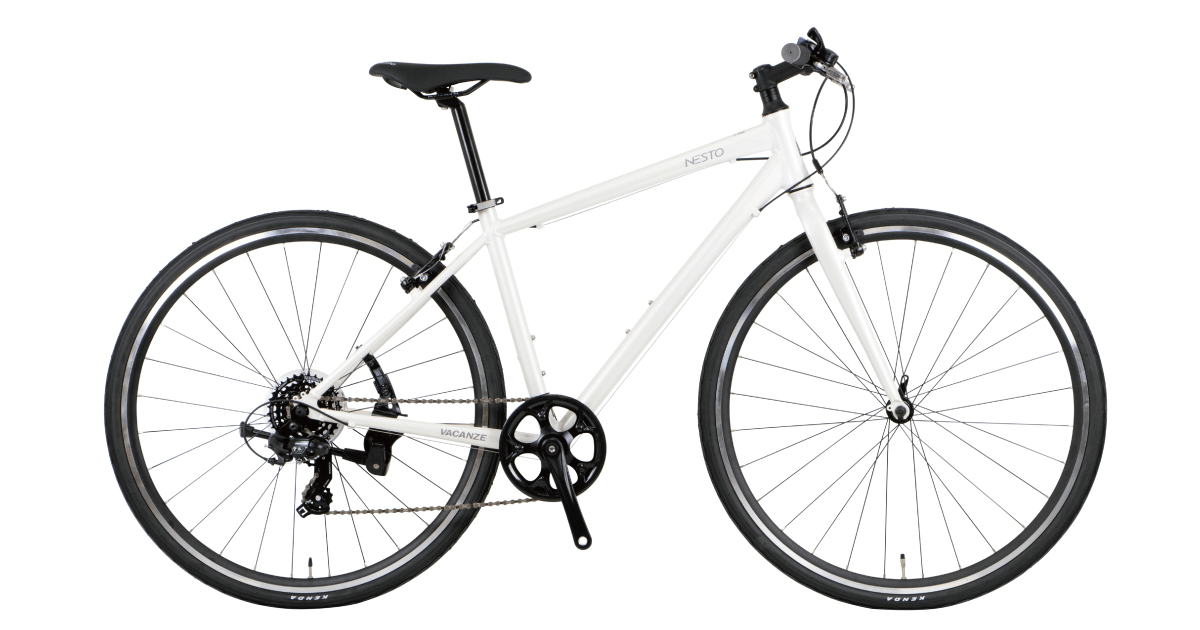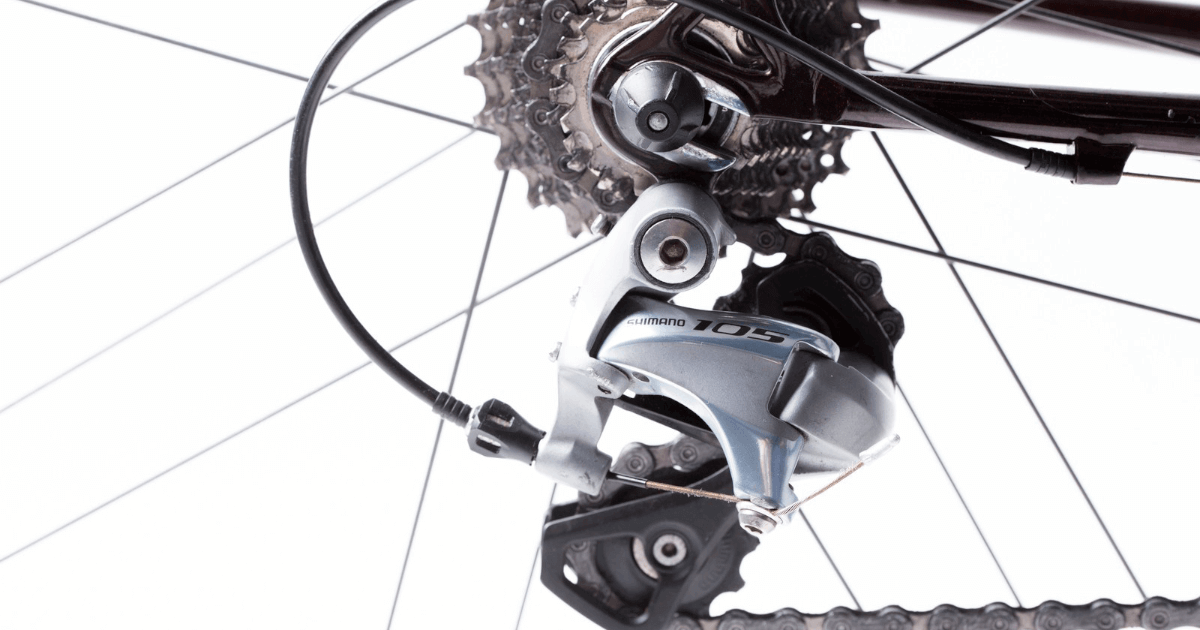Overview and Specifications of WheelTop's Affordable Electronic Groupset "EDS"
This article summarizes the features and specifications of the budget-friendly electronic groupset "EDS" newly released by the Chinese manufacturer WheelTop.
Modified at: Apr 8, 2025
Posted at: Nov 28, 2021
The following is a summary of the grades of Shimano components (for Road bike and MTB) used in hybrid bikes. There are also points to choose from when comparing hybrid bikes from a component perspective.

Table of contents
Sponsored Link
Among road components, the ones commonly found on hybrid bikes are the CLARIS and SORA grades, which are the second-lowest in Shimano’s road bike lineup.
Higher-end hybrid bikes sometimes feature the 105 components, but these models are less common in the complete bike market. When a hybrid bike is equipped with 105 components, the cost of the component set increases, pushing the total price of the complete bike well above $800. In this price range, many users may choose to opt for a road bike instead.
Shimano’s high-end race-grade components, DURA-ACE and ULTEGRA, are unlikely to be found on hybrid bikes.

Shimano Road Bike Components: Brand, Grade, and Identification
A summary of Shimano's road bike component brands, grades and how to identify them. The model numbers and features of each are also included.
Since hybrid bikes are flat-bar bikes, the components used are often similar to those on mountain bikes (MTBs), leading to the adoption of MTB components in many cases.
Historically, entry-level and mid-range hybrid bikes have commonly used lower-grade MTB components such as Tourney, ALTUS, and ACERA. Higher-end models typically feature DEORE 10-speed components.
This trend was similar to road bikes, where the general advice was, “If you’re riding a sports bike with 11-speed or more, you should just go for an MTB.” However, the release of the new “CUES” components in 2023 has begun to change the situation.
As we’ll discuss further, CUES offers 9-speed, 10-speed, and 11-speed components, and some of the parts can be swapped to change the number of speeds. This allows for the possibility of upgrading to an 11-speed setup later on. However, due to cost considerations, many hybrid bikes with CUES components will likely come with 9-speed or 10-speed systems.
If you plan to buy a hybrid bike in the future, choosing a model with CUES components will offer greater customization options.
Shimano CUES Components Lineup and Compatibility Guide
A comprehensive guide to Shimano's new CUES component group for MTB and lifestyle categories, including gear ratios, part lineup, and compatibility with traditional components.
Shimano announced a new component brand, “CUES,” in March 2023. Unlike traditional components, where the number of speeds determined the component grade, CUES offers compatibility across 9-speed, 10-speed, and 11-speed within a single brand. ESSA, on the other hand, has been introduced as an alternative to the traditional 8-speed components, and it is compatible with not only flat-bar bikes but also drop-handlebar bicycles.
Shimano CUES Components Lineup and Compatibility Guide
A comprehensive guide to Shimano's new CUES component group for MTB and lifestyle categories, including gear ratios, part lineup, and compatibility with traditional components.
Shimano ESSA Lineup and Compatibility with Existing 8-Speed Parts
An overview of Shimano's newly released 8-speed component group "ESSA" and its compatibility with existing 8-speed parts.
One key feature of CUES is its “increased compatibility between CUES components,” allowing the 9-speed, 10-speed, and 11-speed components to be interchangeable. This means that upgrading the number of speeds can be done at minimal cost, unlike the old method of replacing the entire component set.
The 9-speed model, the lowest-grade option in the CUES lineup, is priced very affordably, and it is expected that hybrid bikes with CUES will become more common in the future.
Moreover, hybrid bikes have typically been equipped with components up to 10-speed, but with the introduction of CUES, we may see 11-speed hybrid bikes in the market. However, since the CUES 11-speed components are priced higher, users may need to budget for additional customization costs.
It is also important to note that CUES and the shifting technology “LINKGLIDE” are not compatible with traditional road and MTB components that use “HYPERGLIDE” technology, except for some chains and sprockets.
Shimano MTB Component Grades and Compatibility
The following is a list of Shimano MTB component grades and model numbers. Also includes compatibility with components for road and gravel bikes.
Since ESSA uses HYPERGLIDE technology, it is partially compatible with traditional 8-speed components. However, it is important to note that the shifting components, such as derailleurs and shifters, are designed to be compatible with MTB components, meaning that ESSA is not compatible with road 8-speed components.
Let’s compare the Shimano components used in hybrid bikes based on the number of speeds and whether they are road or MTB components.
| Rear Gears | Road Bike Components | MTB Components | Complete Bike Price |
|---|---|---|---|
| 12-speed | - | - | - |
| 11-speed | 105 | CUES | Around $1,500 |
| 10-speed | TIAGRA | DEORE 10s, CUES | Around $750 |
| 9-speed | SORA | ACERA, CUES | Around $670 |
| 8-speed | CLARIS | ESSA, ALTUS | $450-600 |
| 7-speed | Tourney A070 | Tourney | $Less than $400 |
In the entry-level category, the most common components are the 8-speed CLARIS and ALTUS, priced between $400$ and $600. These 8-speed systems have cost-effective consumables like chains and sprockets, making them a popular choice for everyday use and well-suited for hybrid bikes.
However, with the introduction of CUES, it’s possible that lower-grade hybrid bikes may shift to a 9-speed standard.
For hybrid bikes priced under $400, the Tourney is commonly used. In this price range, it is often cheaper to buy a new bike than to try and upgrade a road or MTB bike.
At the $800 range, hybrid bikes typically come equipped with SORA or ACERA components. With SORA, you can convert the bike into a road bike by adding handlebars and STI levers. In the future, CUES may become the standard for these bikes.
Higher-end hybrid bikes, previously equipped with DEORE 10-speed (2x10, 3x10), are likely to shift towards using CUES 11-speed as the main component.
Sponsored Link
For entry-level hybrid bikes, CLARIS and ALTUS are commonly used. While these are entry-level components for road and MTB bikes, they are still solid sports bikes compared to general city bikes.
So, if you have CLARIS or ALTUS, you can enjoy the fun of riding a sports bike, and upgrading to a 9-speed or 10-speed is also possible. Consumables like chains and sprockets are common for 6 to 8 speeds, making them affordable and easy to replace, which is a significant advantage.
On the other hand, the Tourney series, which is often used in cheaper hybrid bikes, uses 7-speed parts that are not suitable for upgrading. Therefore, these bikes are better suited for being “ridden until they wear out” rather than “enjoying upgrades for a long time.”
How to Upgrade the Wheels on a 7-Speed Bike
The 7-speed is used in cheap road bikes and hybrid bikes, and we have compiled a list of ways to upgrade from 7-speed to higher grade gears such as 8-speed, 9-speed, 10-speed, and 11-speed.
For hybrid bikes with 9 speeds or more, it’s recommended to buy one with a CUES component. It’s easy to upgrade to higher gears and parts, and you can enjoy customizing your bike.
Sponsored Link
Overview and Specifications of WheelTop's Affordable Electronic Groupset "EDS"
This article summarizes the features and specifications of the budget-friendly electronic groupset "EDS" newly released by the Chinese manufacturer WheelTop.
What Is Shimano Shadow RD? Features and Benefits
What is Shimano’s Shadow RD used in their latest rear derailleurs? This article explains its features and the benefits of choosing Shadow RD.
[MTB / Hybrid Bike] Hydraulic Brake Manufacturers for Flat Bars
An overview of manufacturers that produce hydraulic brakes for flat-bar MTB and hybrid bikes, along with their key features. Also includes tips on how to choose the right flat-bar hydraulic brake brand.
Shimano Chain Compatibility for Road, MTB, and Hybrid Bikes
An overview of Shimano chain compatibility across road bikes, mountain bikes, and hybrid bikes. Includes guidance on how to choose the right chain for your drivetrain.
Shimano ESSA Lineup and Compatibility with Existing 8-Speed Parts
An overview of Shimano's newly released 8-speed component group "ESSA" and its compatibility with existing 8-speed parts.
SRAM Cassette Compatibility Guide
Compatibility guide for SRAM cassettes used in road and MTB bikes. Find matching drivetrains and wheels easily.
Compatibility Guide for SRAM MTB Components
A detailed explanation of compatibility between SRAM MTB components. This guide outlines which parts can be used together and which combinations are not compatible.
Road and MTB Sprockets Compatibility Overview
A guide to the compatibility between road and MTB sprockets, explaining whether they can be used together with different components.
Types of Shimano Di2 Tools and Their Compatibility
A guide to the essential Shimano Di2-specific tools, especially the "plug tools" used for connecting components, and their compatibility with various Di2 parts.
Shimano CUES Cassette Compatibility Guide
A detailed guide to the compatibility of Shimano CUES series cassettes. Includes an overview of compatible rear derailleurs, chains, and wheels.
Shimano Hydraulic Brake Hose and Connector Standards Guide
An explanation of the differences between Shimano’s hydraulic brake hoses BH90 and BH59, the types of connecting bolts, and how to choose the right hose for your brake system—including key points to watch out for.
[By Manufacturer] Types, Features, Pros and Cons of Hydraulic Brake Oils
This article explains the types of hydraulic oils used in bicycle hydraulic brakes, their characteristics, and the brake oil types used by each manufacturer.
Types and Compatibility of Shimano Di2 Batteries
The Di2 battery is the core of the Shimano Di2 system, influencing the overall system layout. This article explains the different types and their compatibility.
Shimano Di2 Wire Types and Compatibility
Overview of Shimano Di2 electric wire types and their compatibility with Di2 components.
How to Identify Shimano Di2 Generations
Explains the generational differences in Shimano Di2 components and their compatibility. Includes a list of component series and their corresponding generations.
In-Depth Guide to Shimano 12-Speed Cassette Compatibility
A detailed explanation of the key compatibility factors when using Shimano's 12-speed cassettes—specifically the required wheel (freehub) and drivetrain, which differ significantly from previous 11-speed systems.
Perfect Guide to Shimano 11-Speed Cassette Compatibility
A detailed explanation of two key compatibility factors when using Shimano 11-speed cassettes: the required wheel (freehub) and drivetrain.
Perfect Guide to Shimano 10-Speed Cassette Compatibility
A detailed explanation of two key compatibility factors when using Shimano 10-speed cassettes: the required wheel (freehub) and drivetrain.
In-Depth Guide to Shimano 9-Speed Cassette Compatibility
A comprehensive explanation of two key compatibility factors when using Shimano 9-speed cassettes: the required wheel (freehub) and drivetrain.
What Is a BOOST Crank? Differences from Standard MTB Cranks and How to Choose
This article explains what a BOOST crank is, how it differs from conventional MTB cranks, and provides guidance on selection across different manufacturers.